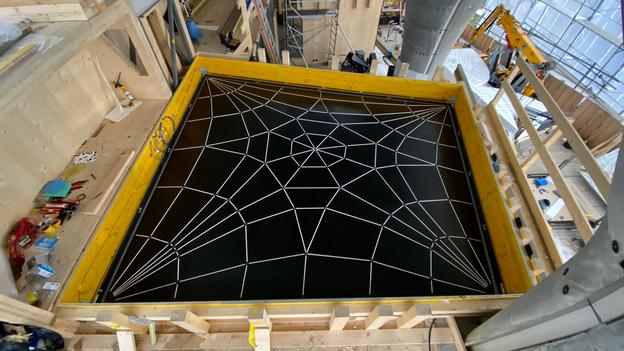Population growth combined with urbanisation will pose huge challenges to construction in the next decades. Most of this construction has historically happened in reinforced concrete, causing tremendous environmental issues, particularly towards global warming due to the large greenhouse-gas emissions of cement and steel. Considering that for medium high-rises of ten to twenty floors, an average of 40% of the building mass is in the floors, this structural element is thus one of the most significant embodied carbon emitters. With billions of floors expected to be built by 2060, this research developed an alternative sustainable construction solution in concrete.
Rib-stiffened funicular floors use doubly-curved shells to carry dead loads and stiffeners to take the life loads efficiently in compression. The tension is absorbed externally in post-tensioned ties (or against the structural frame) rather than through embedded traditional steel reinforcement. This strategy offers a reduction of the amount of concrete of up to 70%, and up to 90% of the reinforcement steel needed, of prevents issues of corrosion, and facilitates end-of-lifecycle solutions. Additionally, the structural geometry results in low stresses, allowing for the use of weaker materials with low embodied carbon.
This paper reports on the integrated computational design, engineering and construction of the efficient concrete floor of the HiLo research & innovation unit, built on the NEST platform in Dübendorf, Switzerland. It represents the first application of this disruptive innovation in a real project. The lightweight floor achieves a significant reduction of embodied carbon emissions, compared to the common flat floor slab in reinforced concrete, also due to the use of a large percentage of recycled content both in the cement as for the aggregates, thus additionally contributing to a circular economy in construction.




